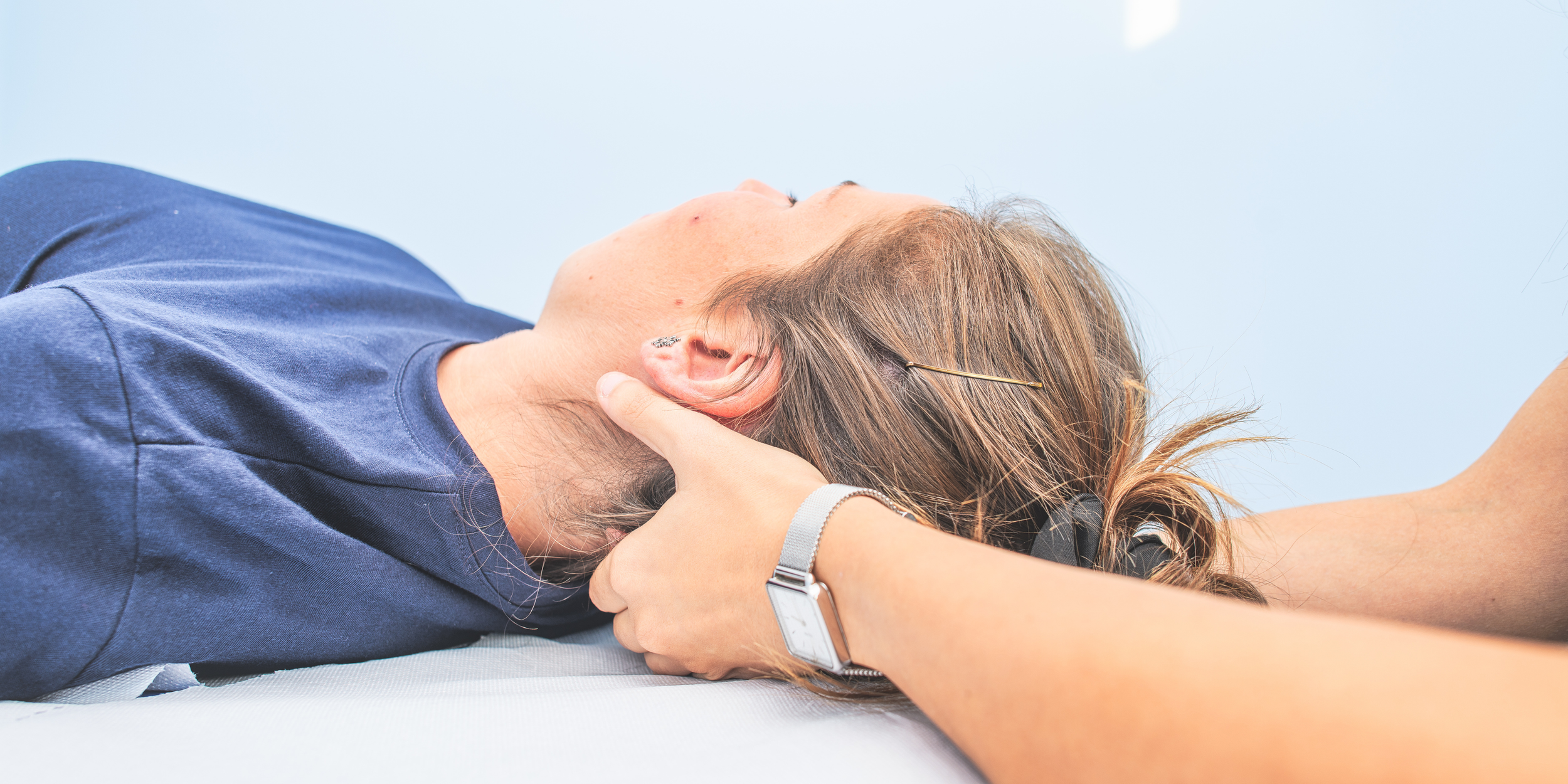
Effective treatments for Headache relief after the very first session
Expert Physiotherapy Care for Tension and Cervicogenic Headaches
Recurring headaches can significantly impact your ability to concentrate, work, exercise, and enjoy daily life. At our Richmond and South Yarra clinics, we provide evidence-based physiotherapy treatment for tension-type headaches and cervicogenic headaches—two of the most common headache types associated with neck stiffness, poor posture, and stress.
Our headache treatment program is tailored to your unique presentation, focusing on hands-on therapy, postural correction, and exercise rehabilitation to reduce pain and prevent recurrence.
Understanding Headache Types We Treat
Tension-Type Headaches
Tension headaches feel like a tight band around your forehead, temples, or the back of the head and neck. They are commonly linked to muscle tension, stress, eye strain, and poor posture—especially in people working long hours at a desk.
Physiotherapy can help by:
Releasing tight neck and shoulder muscles
Improving posture and ergonomics
Teaching exercises to reduce muscular fatigue and tension
Cervicogenic Headaches
Cervicogenic headaches originate from dysfunction in the upper cervical spine (neck joints, discs, or muscles). Pain is typically felt on one side of the head, often radiating from the base of the skull or behind the eyes, and may be triggered by neck movement or sustained postures.
We treat cervicogenic headaches with:
Manual therapy to restore mobility in the neck
Deep neck flexor strengthening
Postural retraining and ergonomic education
Headache diary review to identify triggers and patterns
Our Approach
Step 1: Comprehensive Assessment
We begin with a detailed assessment of your spine, posture, muscle tone, and movement patterns to identify the root cause of your headache.
Step 2: Hands-On Treatment
Our physiotherapists use joint mobilisation, soft tissue release, dry needling (where appropriate), and trigger point therapy to reduce referred pain from neck and shoulder structures.
Step 3: Exercise Rehabilitation
We prescribe targeted exercises to strengthen postural muscles, correct imbalances, and restore normal movement to the upper cervical spine. These exercises also help reduce the recurrence of headaches.
Step 4: Ergonomic Advice
We offer workstation assessments and posture modification strategies, supported by a free ergonomic setup guide for home and office workers.
Book Your Headache Physiotherapy Consultation
Don’t let headaches control your day. Whether you're dealing with tightness from work-related stress or pain from a neck issue, our team at Sports & Health Physiotherapy Clinics in Richmond and South Yarra is here to help
Frequently Asked Questions (Physiotherapist Answers)
How do you get rid of a tension headache?
From a physiotherapy perspective, the best way to relieve a tension headache is to address the underlying muscular tension and postural dysfunction. Manual therapy to release tight neck and shoulder muscles, combined with exercises that improve posture and spinal stability, is highly effective. We also provide education on stress management and ergonomic setup.
Why do I get tension headaches?
Tension headaches are commonly caused by tightness in the neck and scalp muscles, often triggered by poor posture, stress, eye strain, or long periods of screen time. Weakness in deep neck stabilisers and shoulder girdle muscles also contributes to sustained tension.
How to relieve tension in the forehead?
Tension in the forehead is often referred from tight muscles at the base of the skull (suboccipitals) and upper neck. Physiotherapy treatment focuses on releasing trigger points, correcting posture, and stretching facial and neck muscles. Gentle self-massage, heat therapy, and diaphragmatic breathing can also help reduce tension.
Why do I have pressure in my head every day?
Chronic head pressure may result from persistent neck stiffness, muscle tension, poor sleep, or even jaw clenching (bruxism). In many cases, it’s linked to cervicogenic headache. A physiotherapist can assess whether the pressure is being referred from the cervical spine and help you correct the contributing biomechanical issues.
How long do tension headaches typically last?
Tension headaches can last from 30 minutes to several days, depending on the cause. Chronic tension-type headaches may occur more than 15 days a month. Physiotherapy can reduce both the intensity and frequency of these headaches through hands-on treatment and exercise programs.
Can you rub out a tension headache?
Yes, in many cases, manual therapy and soft tissue massage can provide immediate relief. However, for long-term results, physiotherapy focuses on addressing the muscular and postural causes of the tension to prevent future headaches.
What pressure points get rid of tension headaches?
Common pressure points used in physiotherapy include:
Suboccipital release point (base of skull)
Temporalis and masseter (jaw and temple muscles)
Upper trapezius and levator scapulae (shoulder and neck)
Our clinicians are trained in trigger point therapy and myofascial release to safely target these areas.
What is the main cause of tension?
Tension typically builds from a combination of physical stress (poor posture, muscle fatigue) and emotional stress (anxiety, workload). Our approach integrates both physical treatment and education to help manage and reduce these tension triggers.
How to get rid of anxiety head pressure?
Anxiety-related head pressure is often associated with muscle tension, shallow breathing, and increased sympathetic nervous system activity. Physiotherapy strategies include relaxation breathing techniques, neck and shoulder release, and postural exercises to decrease the physical effects of stress on the body.
